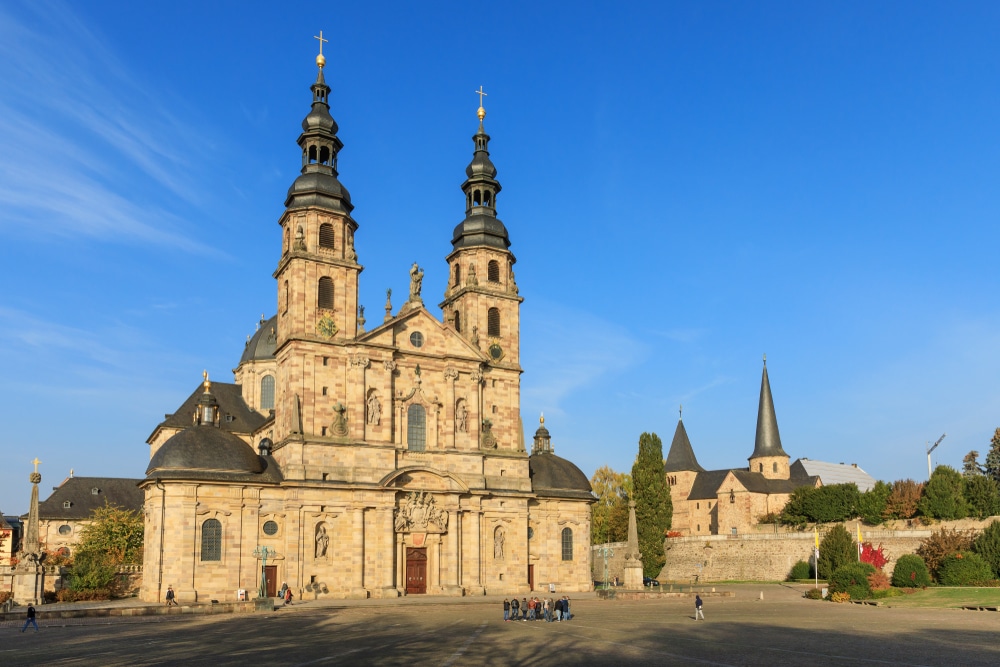The Johannesberg Provost's Office
Early history
The Propstei Johannesberg looks back on a long and eventful history. The former monastery complex found its origin as early as 811 in the form of a first church. Built in Romanesque style, the church was consecrated by Archbishop Richulf of Mainz. In the following years, the less pompous building served as a spiritual extension of the Fulda monastery. Abbot Rabanus Maurus founded a Benedictine monastery in 836. The resident brothers devoted themselves to the search for God and to hard work on the monastery grounds. "Ora et labora et lege" (Latin for: "Pray and work and read") was the watchword for communal prayer.
Around the year 1000, a Romanesque basilica replaced the original building. The basilica was built on top of the existing structure. Existing foundations and load-bearing structural elements were used for the new building and left in their core. The costs for the magnificent building came from the tithes collected from the peasants in the surrounding area. In addition, the poor people were obliged to render services. The legitimation for the collection of the tithe was documented in a document that later turned out to be a forgery.
High Middle Ages and Late Middle Ages
In the years following the completion of the Romanesque basilica, the complex was plundered and burned down several times. Valuable copies of biblical texts were lost forever. In 1019, Fulda was granted the right to mint, market and customs by Henry II, King of the East Franconian Empire. At the beginning of the 13th century, the provostship of Johannesburg was confronted with economic decline. It was not until the pogrom against the Fulda Jews in 1236 that the economic situation stabilised again. Urgently due renovation work could gradually be implemented.
Modern times
In the middle of the 17th century, the church dedicated to St. John the Baptist became the centre of the now final transformation of the complex into a provostry. The provost's castle belonging to the complex dates back to the 18th century. It was designed by Andrea Gallasini, a Baroque architect. The original plan was to build the provost's castle around the church. However, the plans were abandoned and a residential building was erected in the northern part instead.
War years
Fulda was largely destroyed by American troops during air raids. The Johannesberg provostry was largely spared, as the Americans concentrated on the marshalling yard and the adjacent rubber works.
Modern
In the mid-1980s, the "German Centre for Crafts and Monument Preservation - Propstei Johannesberg" moved into the complex. Under its auspices, necessary restorations were undertaken. In 2001, the "German Centre for Handicrafts and Monument Preservation - Propstei Johannesberg" had to file for insolvency. It was then continued by the Propstei Johannesberg gGmbH with its headquarters in Fulda.

